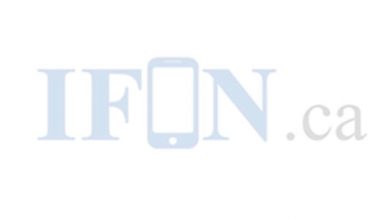
Frequent question, can we use pendrive in MacBook Air? External hard drives, thumb drives, USB drives, flash memory cards and devices like iPod are examples of storage devices you can connect to your Mac using Thunderbolt, USB or FireWire cables, or connect wirelessly using Bluetooth.
Subsequently, how can I use pendrive in Mac?
Amazingly, does pendrive work on MacBook? Depending on the storage capacity of the drive, flash drives typically come formatted with the FAT, FAT32 or exFAT file system, which are compatible with Windows and Mac operating systems. Therefore, to open a flash drive on your Mac, you need only attach the drive and open Finder to view its contents.
Moreover, which pendrive is best for MacBook Pro?
- SanDisk Ultra Dual Drive Go USB Type-C Flash Drive.
- SanDisk Ultra Dual Drive USB Type-C Flash Drive.
- Samsung Duo Plus USB 3.1 Flash Drive.
- Silicon Power USB Type-C Swivel Dual Flash Drive.
- SanDisk Ultra Dual Drive Luxe USB Type-C Flash Drive.
- PNY Elite USB Type-C Flash Drive.
Contents
What is the best format for USB drive on Mac?
The Bottom Line If you absolutely, positively will only be working with Macs and no other system, ever: Use Mac OS Extended (Journaled). If you need to transfer files larger than 4 GB between Macs and PCs: Use exFAT. In all other cases: Use MS-DOS (FAT), aka FAT32.
How do I find my flash drive on my MacBook Air?
Open Finder and locate and select the flash drive from the Sidebar on the left side of the window. Note that the name of the flash drive may vary. You may also see the flash drive on the desktop. If so, double-click it to open the flash drive in a new Finder window.
How do you format a USB on a MacBook?
To reformat your USB, select it and then click the Erase Tab. Here you can set the USB name and the file format (Mac OS Extended (Journal)). When you’re ready click “Erase” button. by dragging the “USB Disk” Icon to the “Trash”.
How do I connect a USB to my MacBook Pro?
Plug the USB-C end of the adapter into a USB-C or Thunderbolt 3 (USB-C) port on your Mac, and then connect your flash drive, camera, or other standard USB device. You can also connect a Lightning to USB cable to sync and charge your iPhone, iPad, or iPod.
How do I open a USB on my MacBook Pro?
Open a new “Finder” window and find the USB drive icon shown in the left sidebar. Click the USB drive icon to display its contents in the main window pane. To open any of the files, simply double-click their icons.
What Usbs are compatible with MacBook Air?
- SanDisk 256GB Ultra Dual Drive USB Type-C.
- PNY Turbo 256GB USB 3.0 Flash Drive.
- Samsung BAR Plus 64 GB 200MB/s USB 3.1 Flash Drive Titan Gray.
Why won’t my Mac read my USB?
Check the power, port, and cable connections: Make sure the USB device is turned on and its cables are properly connected. … If your computer has more than one USB port , switch the device’s cable to another port.
Why is my Mac USB not readable?
Check the file system format Check the file system format of the external hard drive, SD card, USB flash drive or other devices. If it is formatted with the NTFS format, then it is not hard to understand why it is unreadable on Mac. To correct it, please convert NTFS to FAT32. Disk formatting will erase data for good.
Why is my USB port not working Mac?
The Solution to No-Cause Random USB Failure on a Mac: Resetting SMC. … Shut down the Mac and connect the power cable. Hold down Shift+Control+Option+Power concurrently for a few seconds, when the light on the power adapter blinks or changes colors you’ll know SMC reset is complete. Release all keys at the same time.
Can Mac write to NTFS?
Apple’s macOS can read from Windows-formatted NTFS drives, but can’t write to them out of the box. … macOS can natively read and write to exFAT drives, just like Windows can.
Can Mac read NTFS?
Because it’s a proprietary file system Apple hasn’t licensed, your Mac can’t write to NTFS natively. When working with NTFS files, you’ll need a third party NTFS driver for Mac if you want to work with the files. You can read them on your Mac, but that’s likely not going to suit your needs.
